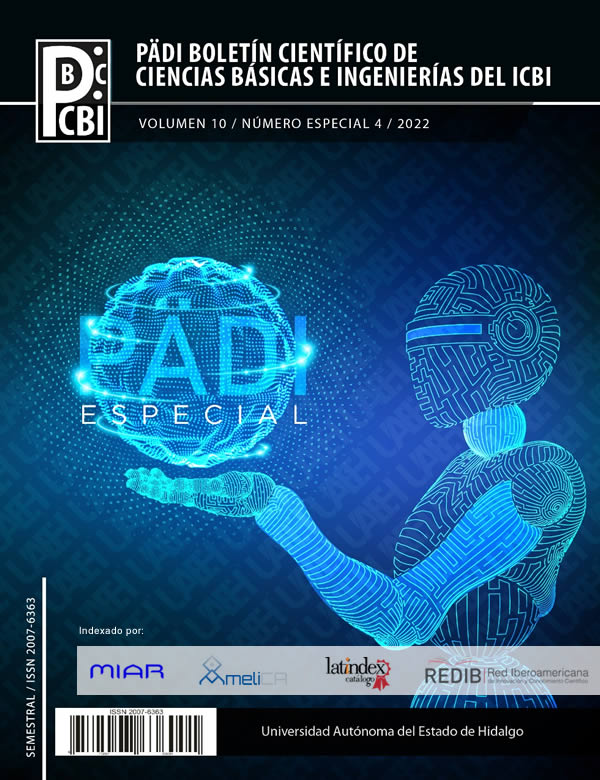Sistema de transmisión de RF de señales biomédicas para aplicaciones en telemedicina
Resumen
En este trabajo de investigación se desarrolla un sistema de radio frecuencia (RF) bajo modulación QPSK para la transmisión de señales biomédicas como EMG y ECG en la banda de los 2 GHz. El sistema se implementa mediante un transceptor que opera en aplicaciones 4G mediante un transceptor dual. Las señales se adquieren mediante la tarjeta de adquisición ECG/EKG y electrodos de superficie, el manejo y tratamiento de la señal se realiza en lenguaje C, a la modulación digital se le implementa un filtro pasa bandas cuadrático en la tarjeta ARRADIO+SocKit. La implementación desarrollada es una aportación a los trabajo de Telemedicina para la era pospandemia, el sistema hace una evaluación espectral de la calidad de la constelación QAM, así como el análisis espectral de la invasión de bandas adyacentes. Como trabajo futuro se pretende emigrar tumbo a la 5G en un transceptor que opere en las bandas de los 3-6 GHz.
Descargas
Citas
Serhani, H. T. Kassabi, E., Ismail, H., Nujum, A., (2020). ECG Monitoring Systems: Review, Architecture, Processes, and Key Challenges. Sensors, 20(6):1796, pp. 1-40.
Gamboa, D., Coria, L., Cárdenas, J. R. Ramírez, R., Valle, P. A., (2019). Hardware Implementation of a Non-Linear Observer for a Diabetes Mellitus Type 1 Mathematical Model. Sensors, 23(4), pp. 1475-1486.
Tsai, T., Hong, J., Wang, L., Lee, S., (2012). Low-Power Analog Integrated Circuits for Wireless ECG Acquisition Systems. IEEE Transactions on Information Technology in Biomedicine, 16(5), pp. 907-917.
Hung, K., Yuan-Ting Z., (2003). Implementation of a WAP-based telemedicine system for patient monitoring, IEEE Transactions on Information Technology in Biomedicine, 7(2), pp. 101-107.
Bhalerao, S., Ahmad Ansari, I., Kumar, A., Kumar Jain, D., (2019). A reversible and multipurpose ECG data hiding technique for telemedicine applications, Pattern Recognition Letters, 125, pp. 463-473.
Reyes Crusaley, L. D. , Cárdenas-Valdez, J.R. Vázquez, G. E. García-Ortega, M. de J., Calvillo-Téllez, A., (2019). Sistema de clasificación SVM de señales electromiográficas extraídas en un sistema embebido. Research in Computing Science, 148(2), pp. 135-141.
Cárdenas-Valdez, J. R., Valdez-Luis, D. García-Ortega, M. J., Corral-Domínguez, A. H., Galaviz-Aguilar, J. A., (2020). SVM Classifier and evaluation of muscle power of EMG signals and Python implementation, International Conference on Mechatronics, Electronics and Automotive Engineering (ICMEAE), pp. 20-22.
Sunitha, N., (2015). Implementation using VHDL of an ECG signal using CSP, International Conference on Circuits, Power and Computing Technologies (ICCPCT-2015), pp. 1-4.
Rudic, B., Schimpf, R. and Borggrefe, M. (2014). Short QT syndrome–review of diagnosis and treatment. Arrhythmia & electrophysiology review, 3(2), pp. 76-79.
Leslie, L., Felmlee, N. (2010). Brugada syndrome. Unmasking a silent killer, Nursing: Spring 2010, 40, pp. 8-10.
Surawicz, B., et, al. (2009). AHA/ACCF/HRS recommendations for the standardization and interpretation of the electrocardiogram: part III: intraventricular conduction disturbances: a scientific statement from the American Heart Association Electrocardiography and Arrhythmias Committee, Council on Clinical Cardiology; the American College of Cardiology Foundation; and the Heart Rhythm Society. Endorsed by the International Society for Computerized Electrocardiology, Journal of the American College of Cardiology,53(11), pp. 976-981.












